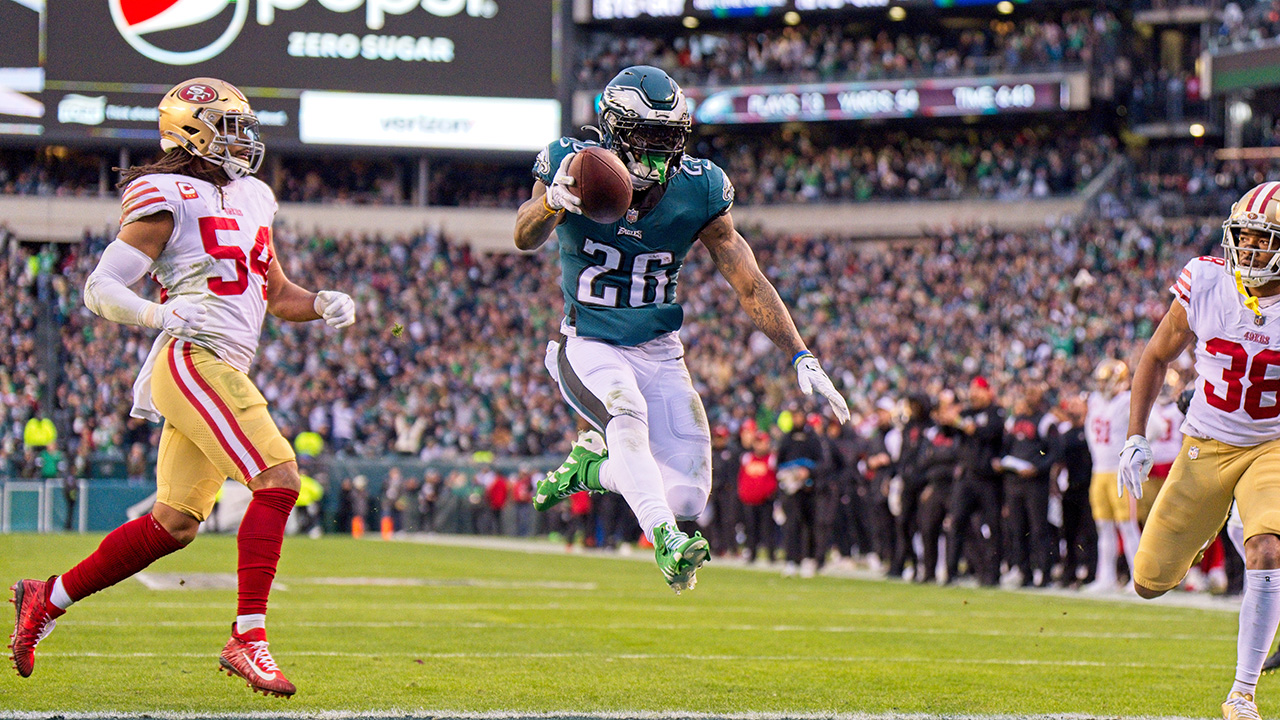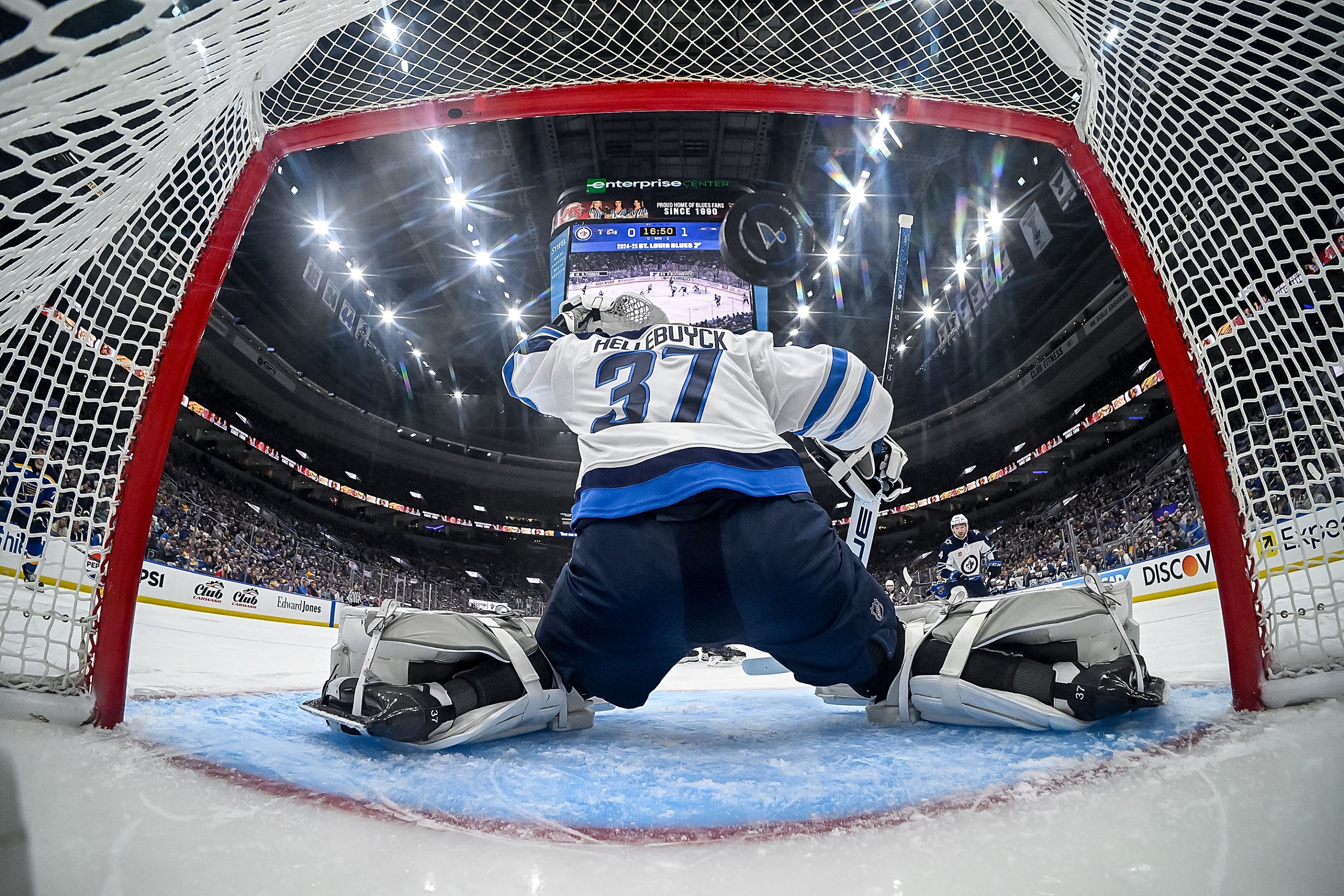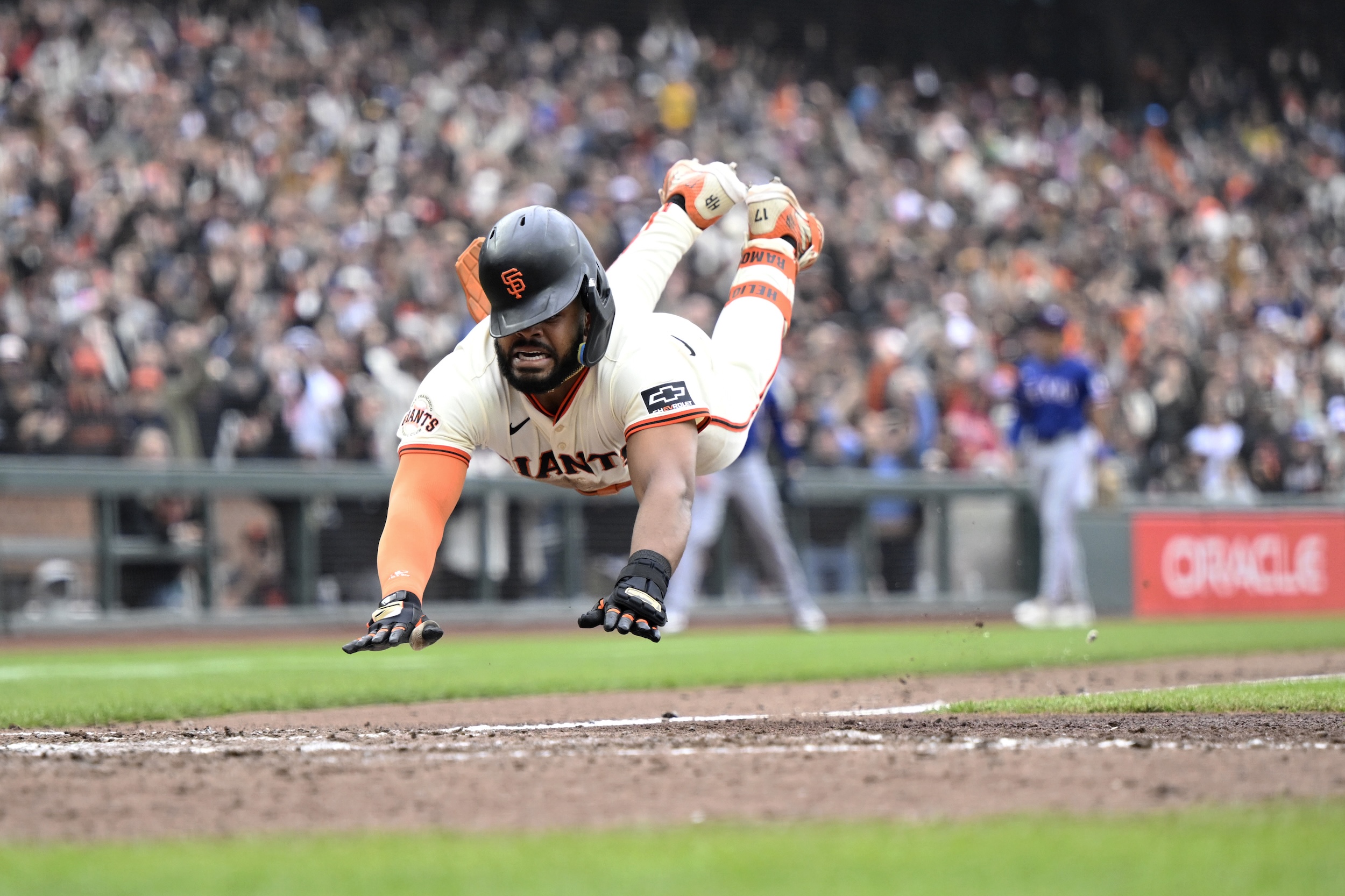The crowd was restless at the first Eagles home game of the season. At the time, fans did not yet know that the team would complete a 14-3 regular season and cruise to the NFC Championship with two playoff routs. The Eagles were 1-0, then, and they’d just given up 35 points to the Lions. They scored on their first drive against the Vikings, going 82 yards in 11 plays with two third-down conversions. The Eagles threw (or Jalen Hurts was sacked) on eight of those plays; the last of those rushing plays was a three-yard scramble by Hurts for a touchdown. Hurts also found A.J. Brown to pick up a third-and-13 that kept the drive going.
The next drive, the Eagles went backwards 10 yards on a three-and-out. Then they scored again, on a 53-yard deep pass to Quez Watkins. The Vikings then scored a touchdown, and the Eagles didn’t do much on their next drive. A pass on second-and-10 lost the Eagles two yards. The Eagles had mostly passed so far this game; they threw the ball 17 times, rushed nine, and Hurts fumbled the snap once. And in my section up top at the game, fans behind us started a chant. “Run! The! Ball! Run! The! Ball!”
They were just being football fans. There is a segment of football fans that always wants to run the ball. Passing has been on the rise in the NFL, but it has been on the rise for a while. The last season in which teams, on average, rushed for more yards than they passed was 1938; the winners of the NFL title game (Giants 23, Packers 17) that year received $504 each. The last time teams attempted more rushes than passes in a season, on average, was 1983. The NFL continues to liberalize passing rules, so it just makes sense to throw more.
But there is a type of football fan—the stereotype is a crusty old Buddy Ryan-type man, but I have found them in all ages, shapes, and sizes—that absolutely loves running the ball. Football is a smash-mouth sport, both in its branding and in point of fact, and running the ball for four yards and a cloud of dust is what these types of fans want. That chant in the end zone during Week 2 is not the reason why—I really hope it isn't, anyway—but Eagles coach Nick Sirianni is giving those fans what they want. They're not taking it back to 1938, or even 1983, but the Eagles are running and running and running the ball, and it's working.
It started last season. The Eagles fell to 2-5 with a 33-22 loss in Vegas to the Raiders that was not nearly as close as that already-lopsided scoreline shows. There was talk about the Eagles being one of the worst teams in the league, and maybe the worst. Then the Eagles showed they weren’t the italicized the worst by beating the Lions 44-6. They ran all over them, rushing for 236 yards and 5.1 yards a carry without starting running back Miles Sanders.
The Eagles just kept on running, and had the best rushing offense in the NFL by the end of the year. They ran on 49.87 percent of their plays in 2021, which was the highest total in the league. People noticed. “The Eagles were going nowhere this season, and then they started running,” The Washington Post’s Des Bieler noted. “How the rebirth of the Eagles’ running game put the playoffs within reach,” Zach Berman wrote at The Athletic. “The Eagles’ Running Game Has Made Them a Potential Playoff Spoiler,” Ben Solak wrote at The Ringer. Longtime beat writer Ruben Frank quoted center Jason Kelce as to the secret to the Eagles’ rushing attack: “I think we’re really good at it.”
The Eagles got routed by Tampa in the playoffs, and the season ended. Then they upgraded both sides of the ball in the offseason, went 14-3, and cruised into the Super Bowl. They got there by running the ball. They rushed on 50.04 percent of their plays this season. This year that was only fourth in the league—Chicago, with Justin Fields, rushed on 56.19 percent of plays—but the Eagles were the most successful of the teams that rushed a ton.
They rushed for 2,509 yards, fifth in the league, and led the league in rushing DVOA. On a recent episode of the Eagles podcast Birds With Friends, co-host Bo Wulf noted that the Eagles passed the ball about two-thirds of the time in the first half, and rushed it about two-thirds of the time in the second. Sometimes this led to the Eagles looking much worse in the second half, even if they were still having success.
This is the best way I can describe it pic.twitter.com/KFmx1vG3u9
— Dan McQuade (@dhm) October 2, 2022
In short: The Eagles did a lot of passing to get ahead. Then, because they were ahead, they ran a lot of plays to keep the clock running in the second half. The rushing is a symptom of their success, to some extent, but it’s also a concerted effort to wear down defenses and take time off the clock to end games. Running the ball is how teams do that, and as Kelce noted last year, they are really good at it.
As Sirianni said on a radio appearance before the playoffs:
I’ll take you back to last year. After our loss against Tampa Bay, I want to take you into that meeting, take the fans into that meeting. The discussion was ‘Okay, we’re number one in rushing the football in the NFL, and we were number 23, number 24 in passing. We said to ourselves if we want to be the explosive offense and score the points that we need to, this needs to change. We need to be in the top 15. We need to still be the running team that we are. We still need to be a top-five running team, but we need to be a top-15 passing team to score the type of points that we know we need to score to do the things we need to do to win the division, to win playoff games, and so on and so forth.
That they have succeeded at that is not the only reason why the Eagles are in the Super Bowl, but they sure succeeded. Miles Sanders rushed for 1,269 yards. Jalen Hurts added another 760. Kenneth Gainwell had 240 and Boston Scott had 217. In the playoffs, the Eagles have rushed for 416 yards (while throwing for only 275). Gainwell leads the team with 160 yards; Sanders has 132. The Chiefs, by DVOA, are 15th in the league in rush defense. If the Eagles get ahead in this game, watch out: It may be over before you think.






